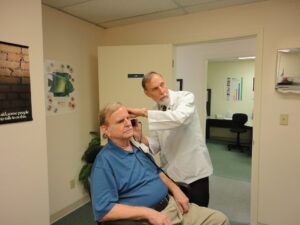 Modern research allows creating more and more biocompatible and highly stretchable fiber optic products. The optical fiber may one day be implanted in the body to deliver therapeutic pulses of light up at the first sign of disease. The world’s healthcare providers are increasingly looking to advanced biomedical instrumentation to enable more efficient patient diagnosis, monitoring, and treatment. Fiber optic equipment can be used in humans (clinical), in animals (veterinary), or other living organisms (life sciences), and, depending on the intended use, can be for diagnostic, therapeutic, or intensive care uses in clinical applications, research, and preclinical development, or laboratory testing.
Modern research allows creating more and more biocompatible and highly stretchable fiber optic products. The optical fiber may one day be implanted in the body to deliver therapeutic pulses of light up at the first sign of disease. The world’s healthcare providers are increasingly looking to advanced biomedical instrumentation to enable more efficient patient diagnosis, monitoring, and treatment. Fiber optic equipment can be used in humans (clinical), in animals (veterinary), or other living organisms (life sciences), and, depending on the intended use, can be for diagnostic, therapeutic, or intensive care uses in clinical applications, research, and preclinical development, or laboratory testing.
The joint Austrian-Serbian team is moving closer to developing a fully implantable hearing aid. The technology is based on completely contact-free fiber optic equipment that senses the tiniest ossicle movements and use them to stimulate the acoustic nerves. The weak spot of the fully surgically implantable hearing devices is the microphones, which receive sounds and use a sophisticated process to transform them into impulses for the acoustic nerves. It is important that such microphones can function error-free inside the human body for many years. Nowadays this is only possible to a limited extent, so now solutions are urgently needed.
New fully implantable hearing aids can overcome a wide range of patient’s problems. Even state-of-the-art hearing aids often require parts outside the ear. This has many disadvantages for people who wearing hearing aids. For example, parts of the ear often become inflamed and the wearer’s own voice sounds distorted. Plus traditional hearing aids can be stigmatized if the device is visible.
The use of contact-free fiber optics measuring devices to detect sounds is the one highly important advance. Such fiber optic products would allow the microphone to be positioned inside the ear. This technology is based on low-coherence interferometry, a method which picks up superimposed sound waves. The ability to pick up sound from the ossicles is a huge advantage because it fully preserves the natural amplification function distortion and feedback.
The team of Austrian-Serbian scientists needed to address a number of fundamental requirements. For instance, they had to develop the operative procedure for the implantation, as well as the means of “targeting” the laser used for sensing. In the process of research scientists used artificial and animal models, which allowed them to optimize the quality of the ossicle vibration sensing system. The recently published findings confirm the effectiveness of the technology and that, in principle, could be used inside the ear for long periods. Aspects such as system miniaturization and electricity consumption will also be addressed by the team.
Optromix is a fast-growing seller of such products from the fiber Bragg grating (FBG) line of products: fiber Bragg grating sensors, FBG interrogators, and multiplexers and, of course, Distributed Temperature, Acoustic, and Strain Sensing systems (DTS). Our major goal is to deliver the best quality of fiber optic sensors to our clients. Optromix creates and supplies a broad variety of excellent fiber-optic solutions for the monitoring of various facilities all over the world.
If you are interested in Optromix fiber optic products, please contact us at info@optromix.com


 Nowadays the production of optical fibers is robust and flexible enough to address an exciting new range of biomedical applications.
Nowadays the production of optical fibers is robust and flexible enough to address an exciting new range of biomedical applications.  Optical fibers
Optical fibers The uses of
The uses of  Fiber optic products
Fiber optic products Fiber optic devices
Fiber optic devices Aircraft structures require regular, scheduled inspections and monitoring of all possible hazards due to their special conditions and the principles of their design. Therefore, structural health monitoring is conducted through
Aircraft structures require regular, scheduled inspections and monitoring of all possible hazards due to their special conditions and the principles of their design. Therefore, structural health monitoring is conducted through  The scientific experience of the last few decades was marked by major achievements in the field of
The scientific experience of the last few decades was marked by major achievements in the field of